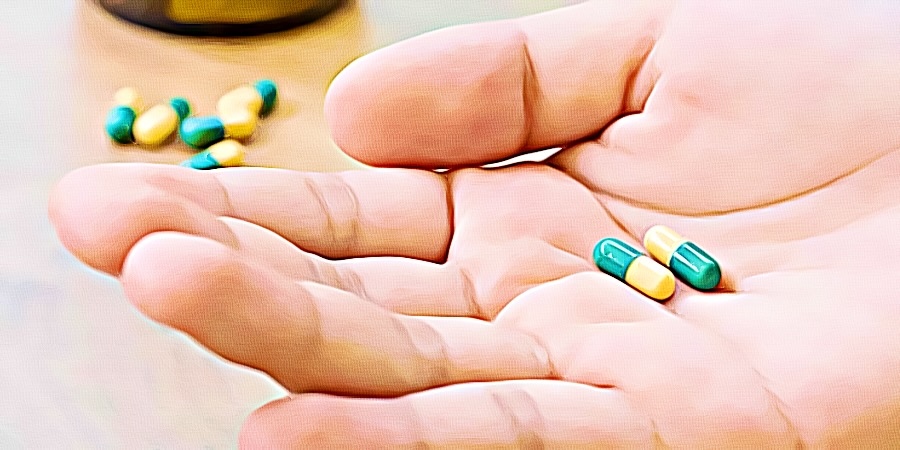Tramadol is an opioid painkiller prescribed for patients experiencing moderate pain after surgery or for chronic pain due to arthritis or fibromyalgia. It is a Schedule IV substance, considered as much less addictive than oxycontin or fentanyl. However, it is still possible to develop dependence and addiction over time.
What Is Tramadol?
Tramadol isn’t usually the first thing to come to mind when opioid addiction is discussed. In fact, it has long been considered the safest opioid to prescribe to patients. Nevertheless, there is still significant potential for abuse and even accidental dependence. This is because it is an opioid and it binds to receptors in the brain,
Tramadol is a synthetic opioid that physicians prescribe to treat chronic pain. It comes in 50mg to 300mg tablets under the following brand names: Ultram, Ultram ER, ConZip, and Ryzolt. Street names for tramadol include trammies, ultras, and chill pills. It has been widely available in the United States since 1995, and in 2018, tramadol was prescribed at least 25 million times.
This substance effectively relieves mild to moderate acute or chronic pain by binding to opioid receptors in the brain. It also mimics the body’s natural pain relief system by inhibiting the reuptake of serotonin and norepinephrine. Patients that take tramadol become calm and relaxed. However, abusing its intended effect and taking higher doses can lead to euphoria.
Tramadol Side Effects
When swallowed, Tramadol’s effects manifest gradually and peak within 4 to 6 hours. Its effects are similar to other opioids since it induces:
- Pain relief
- Slower breathing
- Relaxation
- Euphoria
- Dizziness
- Sweating
- Fatigue
- Constipation
- Headaches
- Dry mouth
- Itching
- Nausea or vomiting
- Confusion
- Erectile dysfunction
- Seizures
A tramadol high can bring about intense feelings of euphoria along with quick pain relief. Often, other effects follow, such as paranoia, distorted perception, poor muscle movement, and delayed reaction times.
Every patient’s nervous system and hormone balance are different, so some may be more sensitive to tramadol than others. Addiction can develop quickly, even if this medication is taken as prescribed. When patients develop dependence, they need more of the drug to feel its effects and maintain the strong high they experience. This is how addiction begins to develop.
Tramadol Warnings
Tramadol should be taken exactly as prescribed. Since it directly affects the respiratory system, deviating from a doctor’s directions can lead to medical complications. Tramadol is a prescription drug not meant for people without a need to treat a medical condition, especially those with a history of drug abuse or addiction. This is why it’s vital to keep it safe from those who may misuse it. If there are leftovers from your prescribed amount, pharmacists or physicians will have advice on how to dispose of the remaining doses.
Tramadol tablets should be taken whole. Crushing a tablet or opening an extended-release capsule may expose the patient to a fatal dose. Additionally, patients should not take tramadol if:
- They are below 18 years old
- They are pregnant (the unborn child may experience withdrawal symptoms)
- They are breastfeeding
- They have recently had alcohol
- They are taking antidepressants
- They are taking other opioid and narcotic medication
- They have severe asthma
- They have a seizure disorder
- They are suicidal
- They are prone to addiction
If a patient is prescribed tramadol, they should not stop taking it halfway through their treatment. Instead, they should talk to their physician about slowly weaning them off the drug. Their physicians will recommend shifting to lower doses before eventually stopping. This gradual tapering process will help their body adjust to the loss of the drug and will likely be a smoother, healthier experience overall.

Tramadol Withdrawal
Despite being relatively less addictive than other opioid painkillers, more and more patients have turned up in emergency rooms due to tramadol withdrawal. In 2017, almost 2 million Americans reported misuse of oral tramadol.
Regular abuse of tramadol can cause physical and emotional dependence. Patients experiencing severe chronic pain may take higher doses without their doctor’s consent, putting them at risk for respiratory problems, seizures, and addiction.If a patient becomes more and more reliant on the drug to alleviate pain and feel the euphoria it evokes, this makes them likely to misuse it.
Tramadol dependence can develop very quickly. It starts with the brain becoming dependent on these chemicals and creates new pathways for these neurotransmitters. This is how withdrawal symptoms occur. Suddenly depriving the brain of these chemicals makes it go haywire, speeding up and slowing down various processes in the body.
Tramadol relieves pain through two mechanisms: the regular opioid route by stimulating opioid receptors in the brain and inhibiting the reuptake of norepinephrine and serotonin. Because the nervous system is affected in two ways, tramadol withdrawal is unique in that symptoms occur in two prongs: traditional and atypical opioid withdrawal.
Traditional opioid withdrawal symptoms include:
- Sweating
- Chills
- Runny nose
- Increased breathing
- Nausea or vomiting
- Diarrhea
- Abdominal cramps
- Muscle pain
Atypical opioid withdrawal symptoms include:
- Anxiety
- Panic attacks
- Paranoia
- Insomnia
- Confusion
- Hallucinations
- Depersonalization
- Sensation of pins and needles in the extremities
Tramadol withdrawal timeline:
First 72 hours: Onset of withdrawal symptoms, including drug cravings, sweating, palpitations, insomnia, sensation of pins and needles.
Days 4 to 7: Persistent drug cravings, disorientation, confusion, insomnia.
Days 8 to 14: Mild physical symptoms with the onset of persistent psychological symptoms such as anxiety, depression, and intrusive thoughts.
Tramadol withdrawal symptoms will vary in severity and length depending on age, overall health, genetics, and substance abuse history. While physical symptoms subside within two weeks, the onset of post-acute withdrawal symptoms (PAWS) may follow.
PAWS are primarily psychological, including depression, anxiety, mood swings, poor concentration, insomnia, and decreased appetite. Patients with long-term addiction may experience PAWS for 18 to 24 months, with varying severity.
How Long Does Tramadol Stay In Your System?
Most basic drug tests do not screen for tramadol because it is only a Schedule IV substance. To detect tramadol use, a specific test for prescription painkillers is necessary.
Tramadol remains in the system for roughly the same amount of time as other opioid substances.
- Saliva: Tramadol can be detected in the saliva for up to 48 hours after previous use.
- Blood: Up to 48 hours.
- Urine: Up to 72 hours.
- Hair follicles: Up to 3 months after last use.
Several factors determine how long drug traces can remain in your body:
Dose and length of use: Higher doses remain for extended periods in the circulatory and endocrine systems. It will take much longer for tramadol to be completely flushed out of the system of patients who take it regularly.
Drug form: Tramadol in tablet form remains in the body for much longer because it has to travel through the entire digestive system. In contrast, Tramadol injections or drops are excreted much faster.
Metabolic rate: Every person has a different metabolic rate depending on age, genetics, body type, and activity level. If a person has slow metabolism or reduced kidney function, it will remain in their system for much longer.
Conclusion
Tens of millions of Americans are prescribed tramadol, and nearly two million of them report misuse of the drug every single year. While tramadol is considered one of the weakest opioids, it is still easy to develop dependence and addiction even if the patient follows the recommended dosage of intake. Withdrawal symptoms can lead to many physical and psychological complications, so the safest way to detox is to work with professionals at a treatment center.
Sources:
https://journals.sagepub.com/doi/full/10.1177/1178221820930006

